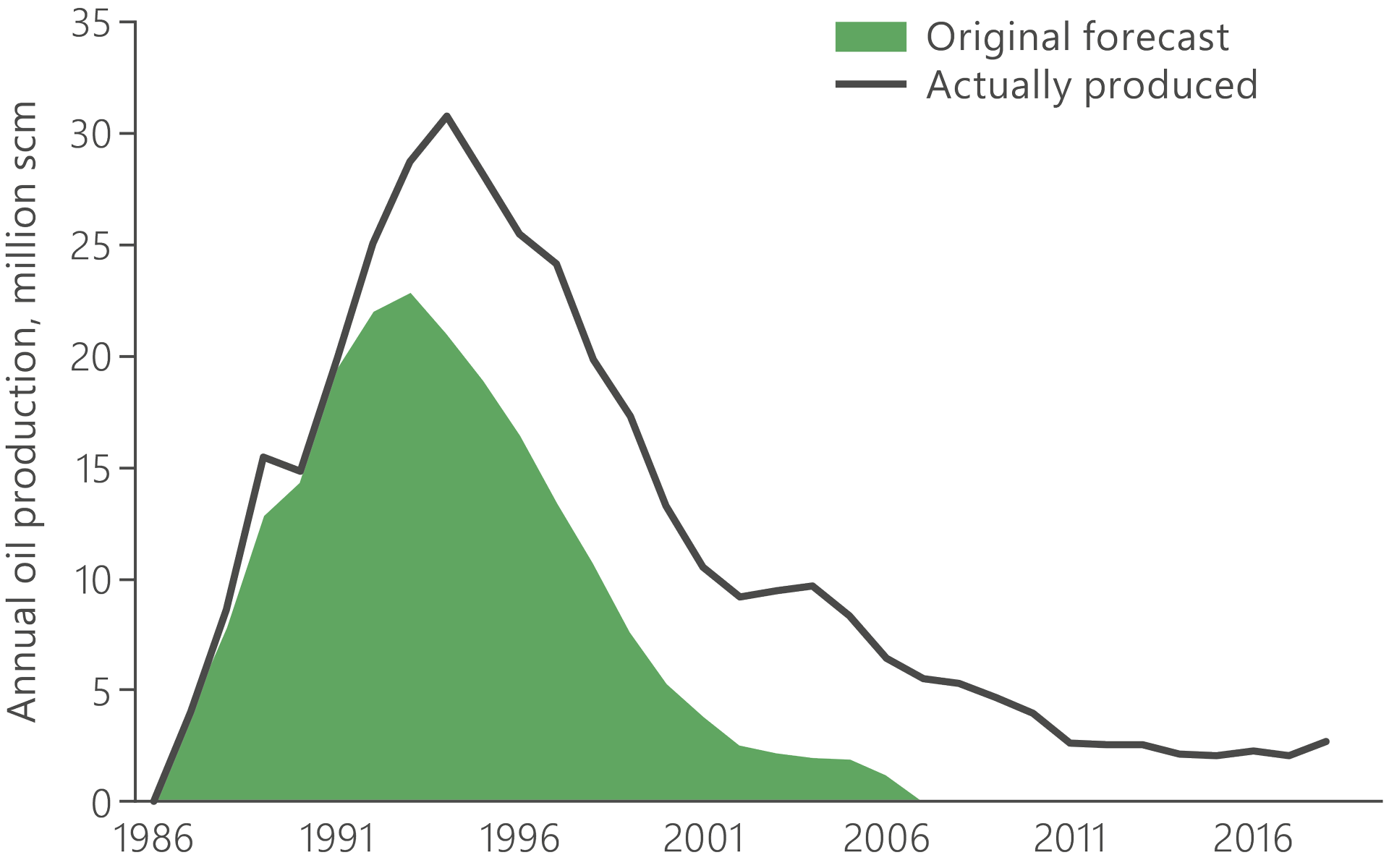Gullfaks – success story in the “golden block”
Gullfaks lies in what was known as the “golden block” on its award in 1978. Proven that year, this oil discovery launched a long and rich adventure.
The first-stage PDO, approved in 1981, involved two concrete platforms – A and B – installed on the western side of the field. A second PDO in 1985 covered a third concrete platform – C – for the eastern area. Gullfaks serves today as an area centre used by a number of surrounding fields.
The main Gullfaks reservoirs comprise sandstone with good properties. Nevertheless, this has not been a straightforward field to produce, because it is compartmentalised by many cross-cutting faults. Expected recoverable reserves when production began in 1986 were about 210 million scm of oil, based on producing until 2007.
Since then, reserve estimates have been regularly increased with new reservoir zones and structures as a result of better-than-expected production properties and continuous measures to improve recovery. Original oil reserves are estimated at 384 million scm. While the expected recovery factor in the PDO was about 44 per cent, this has now passed 62 per cent for the main reservoirs.
Reserve growth on Gullfaks is a success story, where pressure support from water and gas injection, new wells, and reservoir monitoring (including 4D seismic surveying) have resulted in a high level of recovery. Advanced seismic data have been used on the field to position new wells in parts of the reservoir with remaining oil.
Wells have been continuously drilled to new reservoir areas, and the distribution of gas and water injection in the various sections of the field has been optimised. Downhole measures and interventions in existing wells also play an important part in the strategy to sustain production. Work is under way to improve drilling capacity, and significantly more wells are now being drilled annually than before. Managed pressure drilling (MPD) has permitted wells which would otherwise have gone undrilled. This technology allows larger pressure differences in a well to be handled.
Until 2013, the understanding was that resources in the tight Shetland/Lista carbonate reservoir overlying Gullfaks were not recoverable. But new information from test production in 2014 demonstrated that the oil could nevertheless be recovered through natural fractures in the formation.
A PDO for these resources, with recovery from existing wells, was approved in 2015. A water injection pilot to improve recovery was also implemented. Positive results from this project and extensive reservoir studies laid the basis for a revised plan with water injection as the recovery strategy in 2019. Both production from and injection into the Shetland/Lista reservoir are now under way on Gullfaks.
This project is a good example of the way pilot trials can increase knowledge, which leads in turn to improved recovery from more challenging reservoir zones in existing fields.

Figure 2.15 Production profile on Gullfaks.